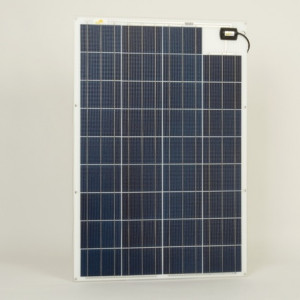| SunWare GmbH & Co KG |

| Registration Date | 8 May 2022 |
| Revision Date | 8 May 2022 |
| Share |
Renewable Energies Solar Cells
Solar Cell
The solar module SW 20185 is designed for larger solar systems. The powerful 110Wp module is designed for 12V systems, but can be used in serial connection at 24V systems. Depending on the irradiation, the module supplies a charging current of up to 6,34A.
The solar panels of the series-20 are light, very compact and extremly powerful. The multicrystalline high-performance solar cells are protected in an EVA laminate and ETFE coatings against weathering. Even in diffused light conditions or even in winter, the modules produce a high charging current.
The solar panels of the series-20 have a front-side cable outlet, panel backside is completely flat. The right of the cable terminal there is a possibility to stick through the cable.
All solar panels have more cells than normal panels have. The additional 4 cells gives the panel a higher voltage and ensure that also by flat installations on deck in hot regions the panels charge the batteries extremely powerfull.
All solar panels can be screwed, glued or attached with clips. The cable has a length of 3m. The carrier material is an aluminum sandwich core. By the core material the cells are perfectly supported and protected. The solar panel adapts to curved surfaces, with maximum curvature of 3cm/m panel length.
Inside the panel package there are white screw rosettes for countersunk screws. It prevents damages of the panels laminate by the screw head.
The solar panels are designed for the harsh marine and salt water use. The cable outlet is screwed to the mounting plate, completely sealed and 100% saltwater proof. By hermetic encapsulation cells and carrier plate are themselves well protected against the aggressive saltwater. The solar panel sizes are optimized to an absolute minimum. The distances between the cells and the panel edges are important for isolation reasons.
Please note that the power output of solar panels depends directly from the light intensity - not heat - and has seasonally strong fluctuations. For optimal performance, the module should be oriented as possible perpendicular to the sun and partial shade should be avoided.